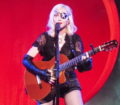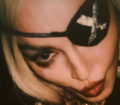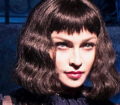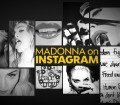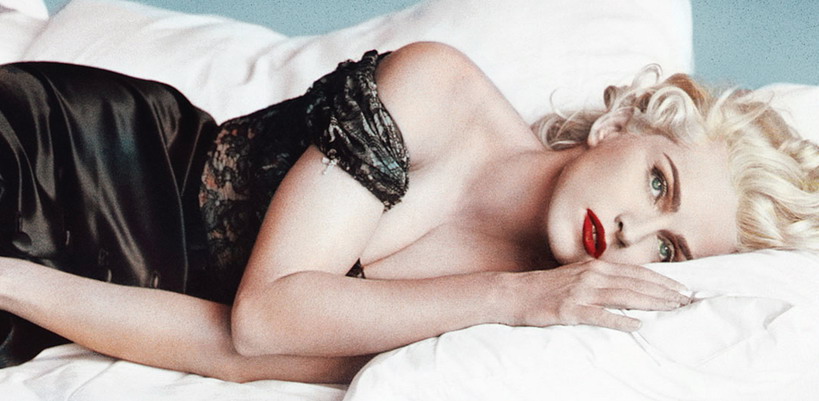
Approaching its 25th anniversary, Truth or Dare will be screened July 13 during L.A.’s Outfest as part of its Legacy Project, which preserves films that offer indelible images of LGBT people. Queerty chatted with its director Alek Keshishian about how Madonna chose him to make the film, the chaos of shooting the life of a superstar and their relationship today.
Queerty: When you were making the film you surely knew that it would become part of the national conversation at the time due to Madonna’s popularity, but did you you’d be discussing it 25 years later?
Alek Keshishian: I didn’t really. It never started out to be a feature film. It was just going to be an HBO special. After we went to Japan, when I realized it could be more, everyone around Madonna was telling her, “Don’t be crazy. Look at what happened with Rattle and Hum (an ill-fated documentary about U2)” and how it didn’t make money. She decided to go with my opinion, rather than the others. It was so bad at one point that our distributor New Line who, when they found out the film was in black and white, even though I’d told them 30 times, decided to drop the film. That’s how unknown a concept it was at the time. When the phenomenon happened, it took us all by surprise.
Queerty: So you had no idea that the film would have such cultural impact?
Alek Keshishian: No. This movie casts a very big movie to get out of. Although now it’s interesting that I’ll see younger people and they’ll say, “I loved your movie.” I’ll ask if they mean Truth or Dare and they say, “No, With Honors.” Then there are a lot of young people who don’t even know what Truth or Dare was so that’s definitely receding.
Queerty: You only had a few music videos on your resume in 1990. How did you earn Madonna’s trust for such a massive, personal project?
Alek Keshishian: I don’t know. She just saw the opera I did in which I used some of her music and was surprised by her emotions and reaction to it. It was a very bad video. [Laughs] My parents had taped it. I was almost embarrassed to show it to her. She said to me, “If there’s anything I can do to help you with this, let me know.” Unbeknownst to me, she told her agents, “I want to see everything this kid does.” I didn’t realize that until long after the film was shot. I was staying with her in her apartment in New York and in her library there were individual VHS tapes of all my music videos. She hadn’t gotten a compilation, she’d gotten them one at a time right after they were made. She said, “You shoot dance better than anybody.”
Queerty: That must have been surreal.
Alek Keshishian: Talk about bizarre. When I left Harvard my roommates asked if we were all coming back for the five year reunion and I said, “No, I’ll be back in four years with Madonna.” I made no effort. Even after I met her. I never asked for her help. Four years to that day we were in Boston shooting Truth or Dare. We definitely some weird karmic thing going. It was only because of the trust that I could shoot the stuff I was shooting with her.
Queerty: How did the project evolve from an HBO concert to this candid, behind-the-scenes documentary about the tour?
Alek Keshishian: In Japan I just started shooting everything. I think she expected that I would just shoot her getting off the plane and with fans and light stuff like that. I said to her, “If I’m going to shoot this, you have to give me carte blanche to shoot whatever I want.” She was like, “OK.” Remember at the beginning of the film when she goes “get out!” or when she’s trying to get the massage and says she won’t be able to relax? I told her that we had talked about this off-screen. You can hear my voice. She says, “Alek, no.” One thing I realized I could do was get interviews with the dancers in bed. I’d make appointments and come in while they were half asleep and interview them in bed.
Queerty: Did you show her the dancer interviews after you filmed them?
Alek Keshishian: When we got back to L.A. Madonna started watching that and all my other footage. I told her there was a movie there. I told her, “This is like a Fellini film. You have the craziest characters around you and you’re like a mother hen.” I knew after Japan what the point of the documentary was going to be. It was so clear to witness it in Japan. I had a lot of resistance. I was a 24-year-old kid. Her advisors were telling her, “What the hell are you doing listening to this kid?” Then she gave me final cut. I told her that if she didn’t it would seem like a puff piece on you. I told her she had to trust me. Obviously my goal wasn’t to make her look bad. I wanted her to look real. I have to give her credit. She was incredibly brave and it was against the advice of a lot of people around her.
Queerty: How did you keep from being overwhelmed by all the chaos that surrounds her? Did she prepare you for it ahead of time?
Alek Keshishian: No, she didn’t. By day three I was having panic attacks. I wondered what the fuck I was doing. I didn’t have time to get my crew together. But once I was there I was too busy and focused to ever feel overwhelmed. When you make a documentary you will inevitably miss things. There was something a documentarian said once that actually took some pressure off me. A documentary probably captures only five percent of what happens but in that five percent you get the feeling of the full one hundred percent. That’s what this movie did. We shot 200 hundred hours of black and white backstage footage. 200 hours! It took me a month and a half to just view it. When you’re shooting like that I couldn’t become part of the chaos, I had to just capture it.
Queerty: When you were shooting like that were you aware of the story arc or did all of that come in the editing room?
Alek Keshishian: I knew that it would be about them. Then it kind of developed itself. There were things that were mentioned one place that I’d use elsewhere. She brought up Moira Kelly in Japan and I immediately told my producer that we needed to find Moira. We ended up finding her in New York but the way I cut it together, it seems like Madonna brings up Moira Kelly at the makeup mirror and then — bang! — we cut to Moira Kelly. There were certain things that were planted early that I tried to pursue. For instance, I found out from the bed interviews that Oliver hadn’t seen his dad in a long time so we precipitated that meeting. We knew to film it because that was an important emotional beat for him. Like in all documentaries, the story developed itself. That voiceover pieces it together. I wrote it at the end.
Queerty: Besides business meetings, did Madonna place any limitations on what she’d let you film?
Alek Keshishian: She just wouldn’t do anything twice. Today with reality TV you do a run-through, then they film it again and again for coverage so they’re improving and you know all the beats of the scene. Madonna, if she walked through a door and I didn’t get, I knew not to ask her to do it again because she wouldn’t. She told me, “You can film anything as long as you’re not making me do anything.”
Queerty: There are several scenes in the film that most fans consider standouts: the Kevin Costner scene, the water bottle scene, and probably Madonna’s nervous laughter when Sharon [her hairdresser] was drugged and sodomized. Did you know you had something golden when you recorded these?
Alek Keshishian: Yeah. As I was filming I knew that was going to be really interesting. You’re basically story telling on the run. If something happened, like when that happened with Sharon, I knew there would be an encounter with Madonna so I had to be prepared to shoot it. It’s a very intense way of working, but storytelling in documentary is the height of working without a net.
Queerty: How did you decide what to include in the final edit?
Alek Keshishian: It was all for the purpose of storytelling. I ended up not using a lot of the bed interviews because it wasn’t necessary for the story I was telling. The first cut I showed her was like three-and-a-half hours long. I clawed it back, but Harvey Weinstein still said I needed to take another 15 minutes out. I said I wouldn’t. He said Jeffrey Katzenberg [then a top-ranking exec at Disney] said we needed 15 minutes cut and I said that’s why Jeffrey Katzenberg doesn’t have this movie. It isn’t a fictional film where we can just lose 15 minutes without the balance being fucked up. If you don’t have the Chanel scene, you don’t have that levity. You don’t get to experience the mayhem that happens around her, along with the playfulness. If I’d changed anything in the final cut, the whole thing would have collapsed in my opinion.
Queerty: You mentioned that you shot more than 200 hours of film. For a lot of gay people that missing footage is like the holy grail. There’s a snippet or two on the internet, but will fans ever get to see all of it?
Alek Keshishian: What’s weird is that we don’t even know where it is. That’s how fucked up it is. We were trying to get a print to the Legacy Project, Miramax owned it then Miramax was bought by Disney, then Disney decided to shut down Miramax and sold the library to these random distributors. So the person who put out the Blu-ray doesn’t even have the neg for us to maintain. I’ve been dealing with Madonna’s management, asking “Where the fuck is this stuff?” It must be in some storage somewhere. Unfortunately, it was handed over to her management so I don’t know. I wouldn’t be surprised if it’s discovered a hundred years from now in some office.
Queerty: What are some of the highlights of the edited footage?
Alek Keshishian: Oh God, the only thing I remember is there was more bitchiness. I decided I didn’t want to show it because in a two-hour film it would seem like she’s a bitch, when she’s not. I decided she could only be bitchy about people we saw on camera.
Queerty: The film is screening at Outfest as part of its Legacy Project. What do you see as the legacy of Truth or Dare?
Alek Keshishian: It makes me very happy that so many gay adults and young people from all parts of the United States refer to this as their first encounter with being able to see gay men shown in such a positive, almost causal way. She was so comfortable with it. It wasn’t an issue. Then you go to the Gay Pride parade and you’re reminded of all the people who died. At that point you’ve kind of fallen in love with the dancers. I think it’s the legacy of how exposure to homosexuality and for people to understand it’s not a big deal, it’s just the way some people are. They deserve the full range of rights and love and everything else. To me, that’s the proudest achievement of the movie. I don’t think we knew at the time that it would have that impact. It was so matter-of-fact. Then I realized people were shocked by the kiss between the two guys.
Queerty: Your film was groundbreaking at the time for the matter-of-fact depiction of the lives of the back-up dancers, Some might even describe it as transformative. I know people who came out to their parents as really young kids after watching the film. One friend told me that seeing the sense of family between Madonna and the dancers prevented him from attempting suicide. Were there conversations about presenting the dancers this way?
Alek Keshishian: No, there was no discussion. It’s just the way I shot it. I didn’t think it should be made into a big deal, except for the poignancy and pain of the Pride march. I wanted the rest of it to just be a given. I didn’t want it to be about them being gay. I wanted it to be about them being characters. By doing that it was kind of revolutionary. We made a really gay movie without the subject matter being gayness.
Queerty: Do you remain friends with any of them?
Alek Keshishian: No, I’m not close to any of them actually. I see Carlton [Wilborn] sometimes. I think everyone just moved on and did their own thing.
Queerty: Three of the dancers [Oliver Crumes, Kevin Stea and the late Gabriel Trupin] sued for invasion of privacy. What were your thoughts about this?
Alek Keshishian: All of the dancers were asked to sign releases. It came with the gig, you know? They all signed them. What happened was when the time was coming for it to be released, some didn’t want it to be revealed they were gay, some wanted money. Legally, it was extortion in my mind. They’d signed the releases and it wasn’t as if we were filming it in secret. The cameras were there all the time. They did the interviews. What did they think was being filmed — a home movie? I didn’t respect that. I felt bad for Madonna because she really did love those kids and they turned around and did that. That’s why celebrities grow more and more weary of getting close to anybody.
Queerty: You cowrote W.E. [a love story about the Duke and Duchess of Windsor Madonna directed in 2011] with her. How had the collaborative process changed with her since the early ‘90s?
Alek Keshishian: To begin with, she knew she wanted to direct it so I felt I was writing it for her. In some ways the role itself required me to acquiesce to her. Whereas on Truth or Dare I was basically the creator. I did all that stuff and didn’t discuss with her nor did I seek her approval. Obviously when you’re writing with someone on a movie they’re going to direct, you work differently. It was like getting back into an old jacket that fits you so well. We’d sit there every day from 3 to 7 and write together. We wrote very quickly because she’s a bit of a taskmaster. I’d be like, “OK, I wrote five pages today. That’s enough.” She’d say, “What are you talking about? You’re here until 7.” Then I’d get bored and I’d start typing bad porn between the Duchess and King until she’d look up from her Blackberry and say, “Alek, stop! It’s not funny.” I thought it was hilarious. So we are still quite playful with each other. Whenever we meet we go right back into that groove of the level of comfort.
Queerty: What did you think about her other doc I’m Going To Tell You A Secret [filmed in 2005 during her Re-Invention tour]?
Alek Keshishian: She asked me to do Secret. I just knew that there wasn’t a documentary to follow up. I said. “Here’s the conundrum: The proper follow up to Truth or Dare is the contrast now that you have a real family. But it’s a Catch-22. If you show your kids, you’re going to be accused of exploiting them. If you don’t show your kids, it becomes this navel-gazing exercise.” She said, “I know, but I want people to know I’m doing important things now.” In a weird way, it almost felt like she wanted to apologize. I was like, “Yeah, but there’s no drama in showing the good work you’re doing. That’s not drama.” [Laughs] I just said very amicably, “You should let someone else do this so it will be completely fresh.” Also, Truth or Dare is a really hard film to follow up unless there’s something amazing going on.
Queerty: Do you think you two will work together again?
Alek Keshishian: Sure, I would never say never with her. We both have other projects right now that we’re focused on that don’t require our collaboration. They don’t fit that paradigm right now, but I hope that we’ll find something to do again together. We’ll see what that is.
Queerty: What are you working on now?
Alek Keshishian: I have this very interesting TV project I’m developing with David Fincher about a big soap star in her final year before her soap is canceled. It’s a dark comedy. It’s a study of narcissism. I’m writing it and Fincher is going to direct the pilot. We’re still in the development stage. I’m also writing a different script for a feature and I’m also writing what I hope will be my next movie, which I can’t discuss. I can say this: It’s very much in the style of Truth or Dare.
Madame X is available in Box Set, CD, Vinyl and Cassette!
Get your copy HERE!
